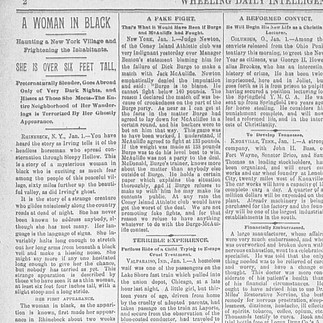
The Victorian Age was a period rich with gothic customs and fashionable mourning. Widows weeds were the go-to fashion for women in mourning. After the death of Prince Albert in 1861, his widow, Queen Victoria secluded herself in a long period of mourning. For the remainder of her life, the Queen only wore dark somber clothing as an homage to her dearly departed husband.
Add to this the gothic fiction of the era in novels such as Frankenstein and Dracula, and women of society found themselves daydreaming over death. Death was romanticized during this time and numerous customs were created such as hair ornaments, death photography, and other memento mori. These customs also infiltrated America especially in the wake of the Civil War when so many perished far from home.
Haunted by a Specter
As the 20th century dawned in America, the fascination with ghost stories was going strong. Spirit Boards were popular pastimes, and the Spiritualist movement was quite relevant. I found journals from this time period written by my own family detailing their investigations into paranormal events in the local area.
Newspapers around the US printed ghost stories to entertain and frighten readers. A Martinsburg, WV newspaper even reported that a town which does not have its own ghost is considered “slow.” One of the most popular ghost stories printed at that time involved a Woman in Black.

The Woman in Black
Early reports of sightings date to the turn of the 20th century. These ghostly women wore traditional “widow’s weeds”, the dark dresses and veils popularized in the Victorian Age. Their dark clothing allowed them to melt into the darkness and fully disappear from view.
Their targets were invariably men who had behaved immorally. Such actions could be staying too late at the local bar, infidelity, and other unsavory behaviors. Early reports relate the apparition would and could stalk, harass, and attack these men until they changed their errant ways.

A Shadowy Figure for a Modern Age
Interestingly, the Woman in Black is still relevant today. While she no longer seems to prey upon immoral men, she still makes appearances all over the US. Perhaps her enduring legend is the result of Susan Hill’s 1983 novella The Woman in Black and the subsequent movie of the same name has something to do with it.
Today, the legend is still quite popular across Appalachia, an area renowned for spooky tales. However, some regions in other parts of the US are also haunted by her spectral form. Aside from the legend being deeply rooted in Victorian gothic culture, there is something deeply satisfying about a ghostly woman being able to frighten an adult man. It is a timeless ghost story that still appeals to modern society.







Comments